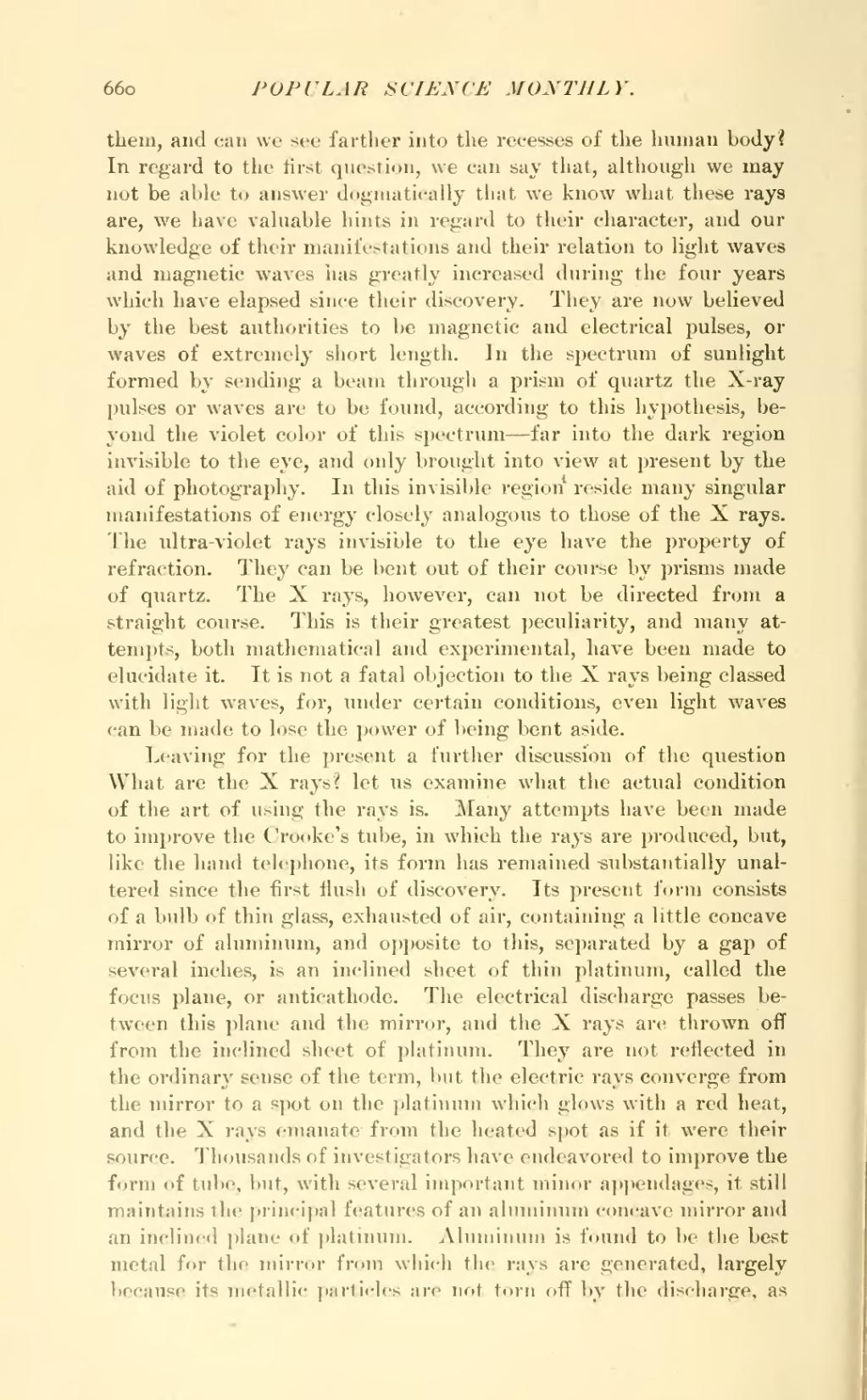them, and can we see farther into the recesses of the human body? In regard to the first question, we can say that, although we may not be able to answer dogmatically that we know what these rays are, we have valuable hints in regard to their character, and our knowledge of their manifestations and their relation to light waves and magnetic waves has greatly increased during the four years which have elapsed since their discovery. They are now believed by the best authorities to be magnetic and electrical pulses, or waves of extremely short length. In the spectrum of sunlight formed by sending a beam through a prism of quartz the X-ray pulses or waves are to be found, according to this hypothesis, beyond the violet color of this spectrum—far into the dark region invisible to the eye, and only brought into view at present by the aid of photography. In this invisible region reside many singular manifestations of energy closely analogous to those of the X rays. The ultra-violet rays invisible to the eye have the property of refraction. They can be bent out of their course by prisms made of quartz. The X rays, however, can not be directed from a straight course. This is their greatest peculiarity, and many attempts, both mathematical and experimental, have been made to elucidate it. It is not a fatal objection to the X rays being classed with light waves, for, under certain conditions, even light waves can be made to lose the power of being bent aside.
Leaving for the present a further discussion of the question What are the X rays? let us examine what the actual condition of the art of using the rays is. Many attempts have been made to improve the Crooke's tube, in which the rays are produced, but, like the hand telephone, its form has remained substantially unaltered since the first flush of discovery. Its present form consists of a bulb of thin glass, exhausted of air, containing a little concave mirror of aluminum, and opposite to this, separated by a gap of several inches, is an inclined sheet of thin platinum, called the focus plane, or anticathode. The electrical discharge passes between this plane and the mirror, and the X rays are thrown off from the inclined sheet of platinum. They are not reflected in the ordinary sense of the term, but the electric rays converge from the mirror to a spot on the platinum which glows with a red heat, and the X rays emanate from the heated spot as if it were their source. Thousands of investigators have endeavored to improve the form of tube, but, with several important minor appendages, it still maintains the principal features of an aluminum concave mirror and an inclined plane of platinum. Aluminum is found to be the best metal for the mirror from which the rays are generated, largely because its metallic particles are not torn off by the discharge, as

